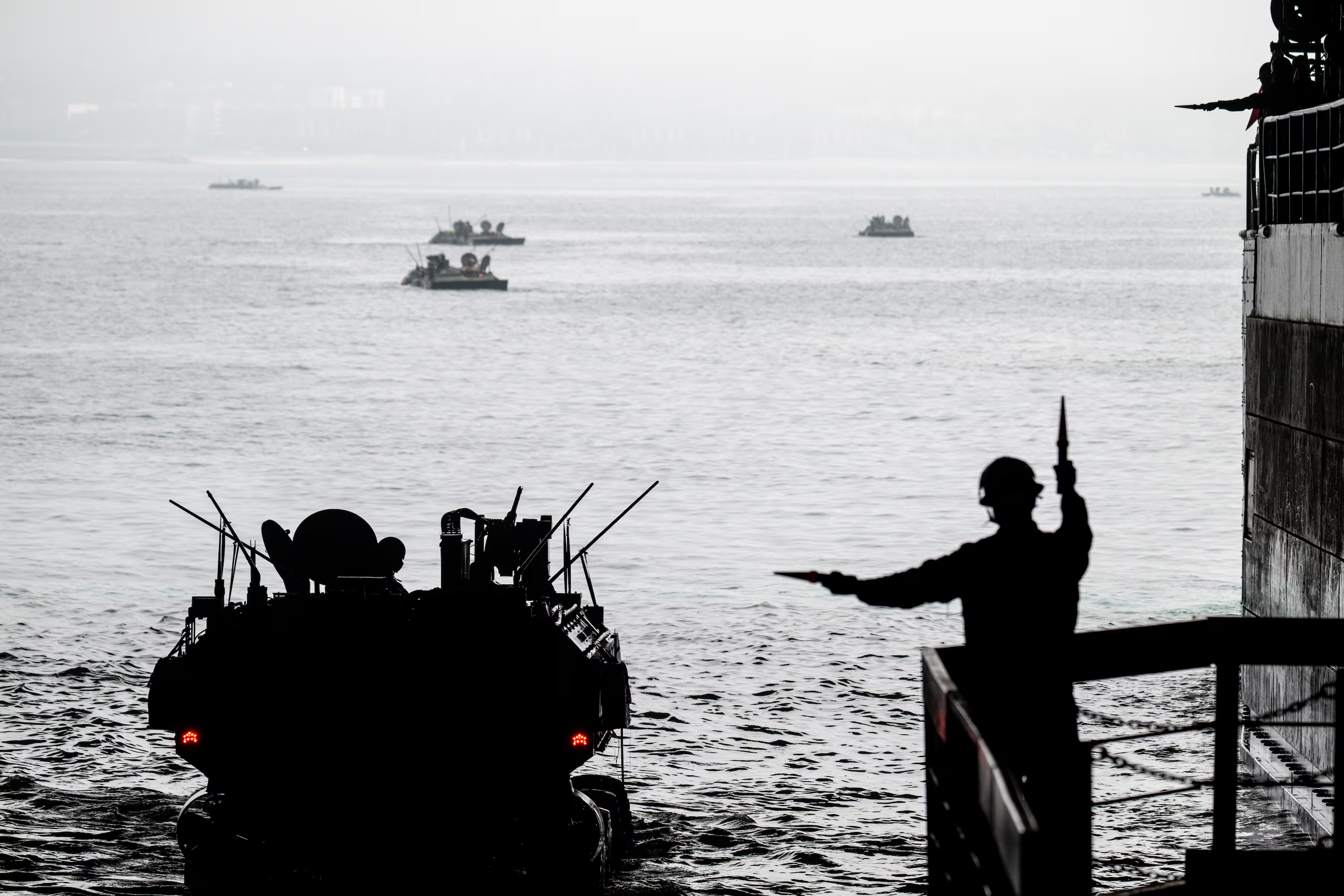
The Japanese port of Sasebo, home to a handful of US Amphibious Assault ships and a ready-made on-standby ability to quickly launch a Marine Expeditionary Unit, is only 737 miles from Taipei, Taiwan.
By Kris Osborn, President, Warrior Maven.
A quick look at a map of Southern Japan and the Pacific theater introduces some interesting, if perhaps lesser recognized, tactical circumstances. The Japanese port of Sasebo, home to a handful of US Amphibious Assault ships and a ready-made on-standby ability to quickly launch a Marine Expeditionary Unit, is only 737 miles from Taipei, Taiwan. This may be known and quite self-evident, yet that is a manageable distance for some ship-launched aircraft, especially if the amphibs move a few hundred miles South of Southern Japan. This is why it comes as little surprise that the USS America, a new-generation of aviation-centrc, F-35B-armed amphibs, has been to Sasebo repeatedly and even been based there extensively at times.
The USS America, in fact, can deploy with as many as 20 F-35Bs with a range greater than 13,000 miles, a distance placing them within striking distance of waters off the Taiwanese coast.
“America was designed from inception to maximize the capabilities of the U.S. Marine Corp’s F-35B Joint Strike Fighter. America is adaptive and flexible with superior aviation facilities; advanced communications, combat systems and command and control equipment,” a Navy essay describing the arrival of the USS America in Sasebo as far back as 2019.
The ability to operate an Amphibious Ready Group and the USS America from Sasebo massively shortens the time window needed for US and allied forces to intervene in a potential Chinese annexation of Taiwan. The USS America was specifically retrofitted with support structures to support F-35B operations and given a special “non-skid” coating to help F-35s withstand the “heat” generated by a vertical landing on the deck of the ship.
Should the USS America be even a few hundred miles South of Japan in anticipation of a potential surprise Chinese incursion, a group of 5th-Generation F-35Bs could quickly intervene and disrupt, stop or simply destroy a Chinese amphibious attack on Taiwan. Given that it is only 100 miles from the mainland, US and allied fighters would have to be well positioned for a timely response. The USS America is an amphib which, without a well deck, has been engineered to project air power in the form of F-35Bs and Osprey titlrootor aircraft quickly across great distances. To a large extent, any question of stopping, deterring or successfully intervening in a Chinese attack on Taiwan, would come down to a question of time, meaning quite simply, can US and allied F-35s, armed warships and long-range weapons respond fast enough to prevent what the Pentagon cautions about as a "fait accompli." For several years the Pentagon's annual report on the Chinese military warns that China may seek to "annex," "take," or "overrun" Taiwan faster than any US allied force can respond, thus making it simply too costly in terms of casualties for any force to try to "extricate" an embedded Chinese for in Taiwan.
Much continues to be said about the People’s Liberation Army - Navy related to its size and sophistication, however at least at the moment, the PRC is operating at a substantial 5th-gen deficit. The PLA Air Force does operate what is refers to as its 5th-generation J-20 aircraft, yet they are not capable of an ocean landing and much launch from the air. Certainly J-20s could reach the skies above Taiwan with air power projection given how close the mainland is, hower any amphibious assault without air superiority or substantial effective air support, would likely have trouble taking a beachhead. Therefore, it would seem well advised for the US Navy to operate amphibs, and especially the America-class, from Sasebo Japan for the purpose of ensuring a rapid defensive response in the air to any Chinese invasion of Taiwan.
Also, a critical part of a potential US 5th-generation air advantage against China in the Pacific results in part because the PLA Navy has no "ocean" launched 5th-generation aircraft. While it is developing a stealthy, 5th-gen carrier-luanched J-31 aircraft, only a few prototypes appear to exist at the moment.

(Sailors aboard the San Antonio-class amphibious transport dock ship USS Somerset (LPD 25) signal to a U.S. Marine Corps amphibious combat vehicle from the 3rd Assault Amphibian Battalion, 1st Marine Division, in the well deck during quarterly underway amphibious readiness training off the coast of Southern California, Oct. 26, 2024. QUART is a joint training exercise between I Marine Expeditionary Force and Expeditionary Strike Group 3 designed to develop and sustain essential amphibious skills for effective operations in maritime environments while reinforcing the Navy-Marine Corps partnership. Somerset is currently underway conducting routine operations in U.S. 3rd Fleet. (U.S. Navy photo by Mass Communication Specialist 2nd Class Evan Diaz))
These kinds of contingencies drawing heavily upon amphibs are likely seen as increasingly vital given rapid arrival of more drones and manned-unmanned teaming. Marines and sailors have been practicing amphibious warfare maneuvers in the 3rd-Fleet area of responsibility in the Pacific closer to the California Coast. The USS Somerset is performing war drills and maritime combat preparations with Marines from the 3rd Assault Amphibian Battalion. Any kind of maritime launched 5th-generation air attack would need to be followed by ship-to-shore surface, air and undersea amphibious warfare response to a Chinese invastion.

